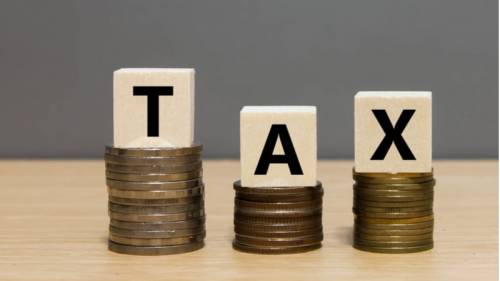Smart Investing: How to use equity rally for tax harvesting
How does it work There is a way to generate tax efficiency. Since investing in stocks is for the long-term horizon, you remain an effective investor. When the
- by B2B Desk 2021-01-08 06:12:09
When it comes to tax planning, people think of Section 80C and other investments. What we will discuss now is different. It will give you a tax advantage, not today, but in the future. This is in the context of your investments in mutual funds and / or stocks. In stock fund / stock fund growth option, it becomes long-term from a fiscal perspective after a one-year holding period. The tax base is, on your earnings, to pay 10% tax plus additional fees and taxes, as applicable, on earnings that exceed Rs 1 lakh per tax year. That is, up to Rs 1 lakh of Long Term Capital Gain (LTCG) per year is tax free; After you pay 10%.
How does it work
There is a way to generate tax efficiency. Since investing in stocks is for the long-term horizon, you remain an effective investor. When the price / net assets go up, you can sell (that is, accounting profit) and buy the same stock / MF chart. How do you help? It helps create a higher purchase cost for your final taxes, when you sell the investment after long enough to hold it.

In the case of wealth taxes, January 31, 2018 is known as the "prior date", which means that prices / NAV prior to this date are irrelevant and the price on this date becomes purchase cost . Suppose the price / NAV as of Jan 31, 2018 was Rs 100 and you will eventually sell it after 10 years when the price is Rs 200 for example. At this point, you will pay taxes of Rs 200 - Rs 100 = 100. You will pay taxes in that tax year (according to current rules), on earnings in excess of Rs 1 lakh. Let's say today after the stock rally the price / NAV went up to say Rs 130 as in December 2020. Today, if you sell the stock / MF chart at Rs 130 and buy it again, as long as the earnings are Let's say Rs 130 minus Rs 100 = Rs 30 within Rs 1 lakh per tax year, it is tax-free for you.
Paying taxes
Through this transaction, the acquisition cost for tax purposes changes from 100 to 130 rupees, which will be relevant when you finally sell it after another, say, seven years at Rs 200. At this point, your earnings will be Rs 200 - Rs 130 = Rs 70 instead of Rs 100. Suppose you invested Rs 10,000 in MF stocks more than a year ago and the portfolio value today is Rs 10,80,000. You can fully redeem the portfolio as the earnings are in the range of Rs 1 lakh. If, say, the market value of the portfolio today is Rs 12 lakh, then when implementing this strategy you have to sell so much that your profit is within Rs 1 lakh to avoid taxes.
This discussion assumes that you invested in a lump sum for the fund and left on a certain date. However, you may have invested through a systematic investment plan (SIP) and may be able to withdraw with a systematic withdrawal plan (SWP). In this case, the net asset value of your first investment will be taken, which is called First in, first-out (FIFO). For example, if you performed a SIP from January 1, 2019, to January 1, 2020, and it went out today, acquiring the NAV from January 1, 2019, would be appropriate, after which the next delivery will be considered. If you make an SWP from January 1, 2021, onwards, the first investment will be considered taxable for each exit.
Maximize Profits and Reduce Taxes
The taxation rule is, on your equity gains, you pay tax at 10% plus surcharge and cess as applicable, on gains more than Rs 1 lakh per financial year
Sell in a market rally as much so that your gains are within Rs 1 lakh to avoid paying tax and reinvest in the same shares to increase your acquisition cost for final sale at a later period
If you have invested through a SIP and withdrawn through SWP, NAV of your earliest investment will be taken, which is called First In First Out.
Also Read: 13 Business Ideas for Couples-Business2Business

POPULAR POSTS
Best Silver Investment Platforms for 2025: From CFDs to Digital Vaults Explained
by Shan, 2025-10-23 12:22:46
Best Investment Plans in India for 2025: A Complete Guide to Grow and Protect Your Wealth
by Shan, 2025-09-18 10:20:46
Which venture capital firms are the most active in funding Indian startups in 2025
by Shan, 2025-08-06 10:42:11
Top 5 Apps to Buy Digital Gold in India (2025): Safe, Simple & Secure
by Shan, 2025-08-01 10:24:51
10 Highest Dividend Yield Stocks in August 2025
by Shan, 2025-07-28 09:31:02
Exchange-Traded Fund (ETF): A Practical Guide to Smart Investing
by Anmol Chitransh, 2025-04-17 10:18:20
The Ultimate Guide to Commodity Trading: Strategies, Risks, and Opportunities
by Anmol Chitransh, 2025-04-02 07:06:01
RECENTLY PUBLISHED

Loan EMIs to Drop as RBI Slashes Repo Rate - Full MPC December 2025 Highlights
- by Shan, 2025-12-05 11:49:44

The Agentic Revolution: Why Salesforce Is Betting Its Future on AI Agents
- by Shan, 2025-11-05 10:29:23

Pine Labs IPO 2025: Listing Date, Grey Market Premium, and Expert Outlook
- by Shan, 2025-11-05 09:57:07

Top 10 Insurance Companies in India 2026: Life, Health, and General Insurance Leaders Explained
- by Shan, 2025-10-30 10:06:42

OpenAI Offers ChatGPT Go Free in India: What’s Behind This Big AI Giveaway?
- by Shan, 2025-10-28 12:19:11





 Subscribe now
Subscribe now 